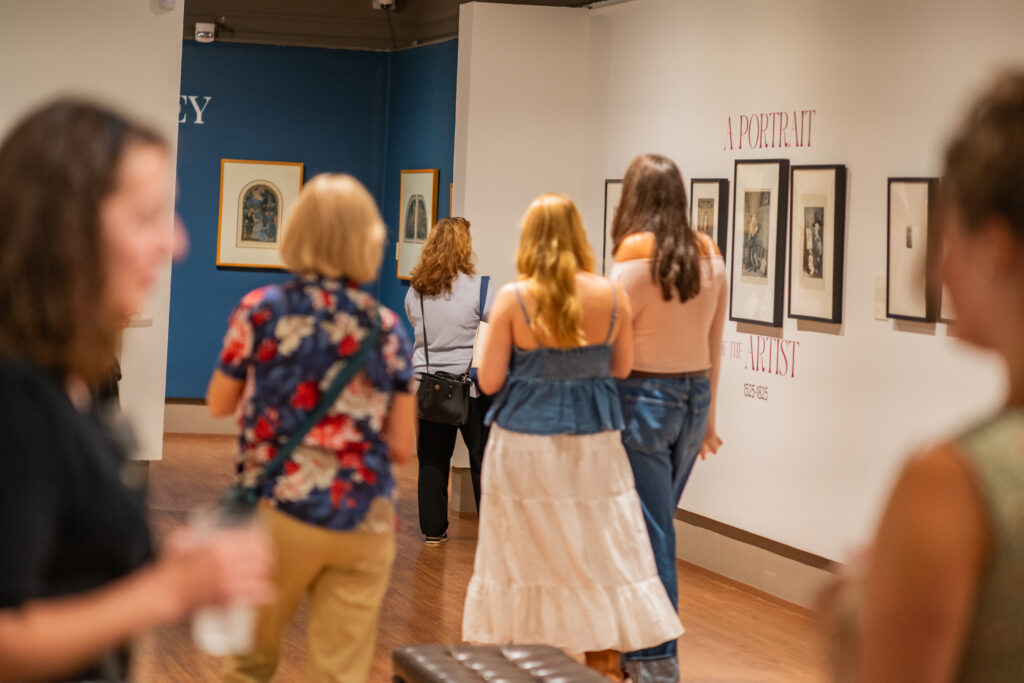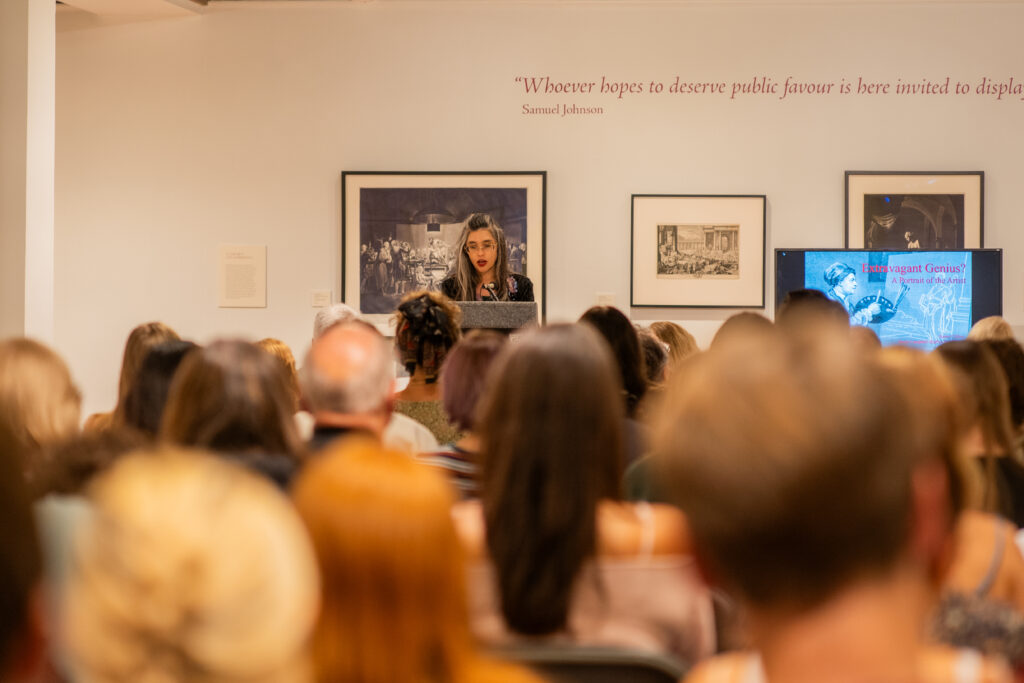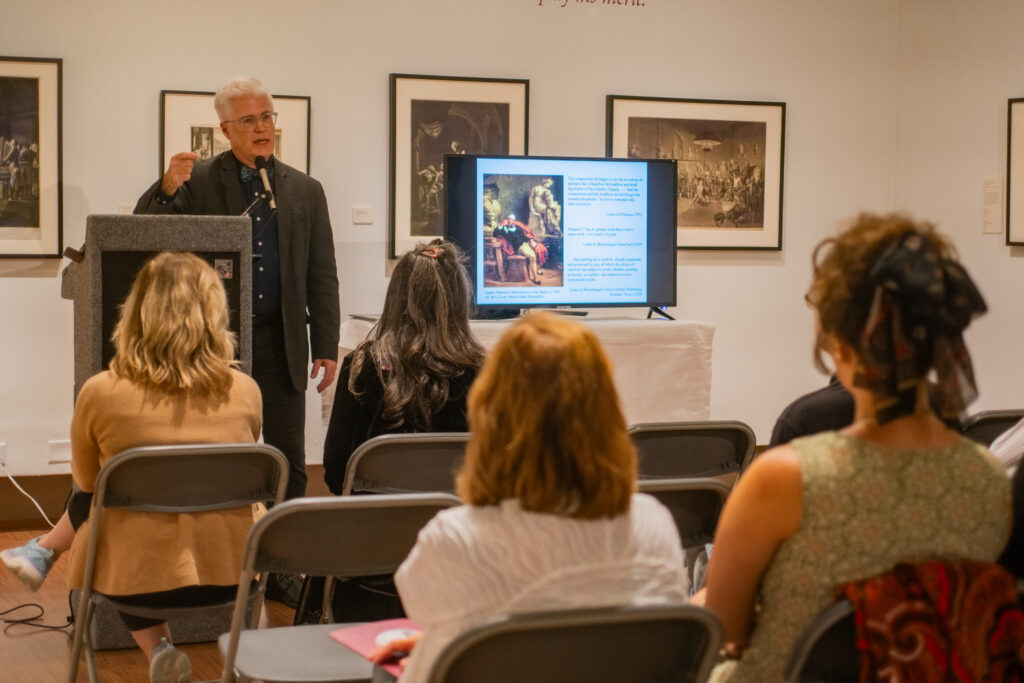
Guests perusing Schmucker Gallery’s ‘Portrait of the Artist’ exhibit. (Photo William Oehler/The Gettysburgian)
By William Oehler, Staff Writer & Director of Photography
On Wednesday, Sept. 18, Director of the Sarah Campbell Blaffer Foundation and
curator of Renaissance and Baroque painting at the Museum of Fine Arts, Houston James Clifton gave a talk describing his experience and interpretation of the recent exhibit: Portrait of the Artist, co-curated by Isobel Debenham ’25 and Cyndy Basil ’25.
Art history professor Felicia Else opened the evening introducing Clifton, and their relationship through art history conferences and years of collaboration: “[This] great collaboration has allowed our campus to see some outstanding artworks, and for me to grow as a teacher and mentor to my own students.”

Professor Felicia Else introducing Guest Speaker James Campbell. (Photo William Oehler/The Gettysburgian)
Clifton opened his remarks explaining the “genesis of this exhibition.” He explained the unique relationship between the Sarah Campbell Blaffer Foundation as being separate from the MFA, and filled with paintings from the sixteenth through to the nineteenth centuries, creating a “cabinet of curiosities.” One of the foundation’s goals is to exhibit artworks that would otherwise not be published. Clifton highlighted how the unique size and emphasis on student collaboration with the Schmucker Art Gallery helps to realize that goal.
Throughout his remarks, Clifton pulled out key works in the exhibit to offer his interpretation and key elements that make the pieces stand out, such as “The Genius of Salvator Rosa.”
“The romantic notion is the exaltation of talent over skill… the genius is this kind of guiding principle and the spirit of his life and his work,” he said.
In this work, genius is a personification of the artist, Salvator Rosa, connecting him to the seventeenth-century idea of what genius meant in relation to art and creation.
During the sixteenth and seventeenth centuries, the relationship between artisanship and nobility was based upon the work they created and how they created their works. Clifton explained that noblemen saw any job that worked with hands as not fit for nobility, thus painting and sculpture fit into this idea.
“Leonardo [DaVinci] commented on painting; that the painter could dress up while he was painting, he could listen to nice music… It was all clean and gentile. But the sculptor made a racket while he was sculpting, he was dirty and covered in sweat, and later with the marble dust, he would look like a baker,” Clifton said. In this comparison, DaVinci demeans both professions of baking and sculpting and sets sculptors as only lowly entrepreneurship, overlooking the required expertise.
Clifton finished his remarks focusing on William Hogarth, a British artist working in the mid-seventeenth century. Hogarth detested the French, both in personality and artistic expression, but often traveled and worked across the channel. On one trip he was even arrested for being suspected as a spy. He depicted the scene of his arrest in what is now called “The Roast Beef of England.”
“The only French person in [the print] is the Catholic Priest. Hogarth was anti-Catholic as well as anti-French, and the Catholic Priest is eyeing the beef… the solid piece of meat represents England,” Clifton explained.
How Hogarth chose to portray himself in his prints always aired on the side of humor or spite.
The evening closed with a reception where guests could walk through the gallery and enjoy the prints. The exhibition will be on display until Dec. 12.

